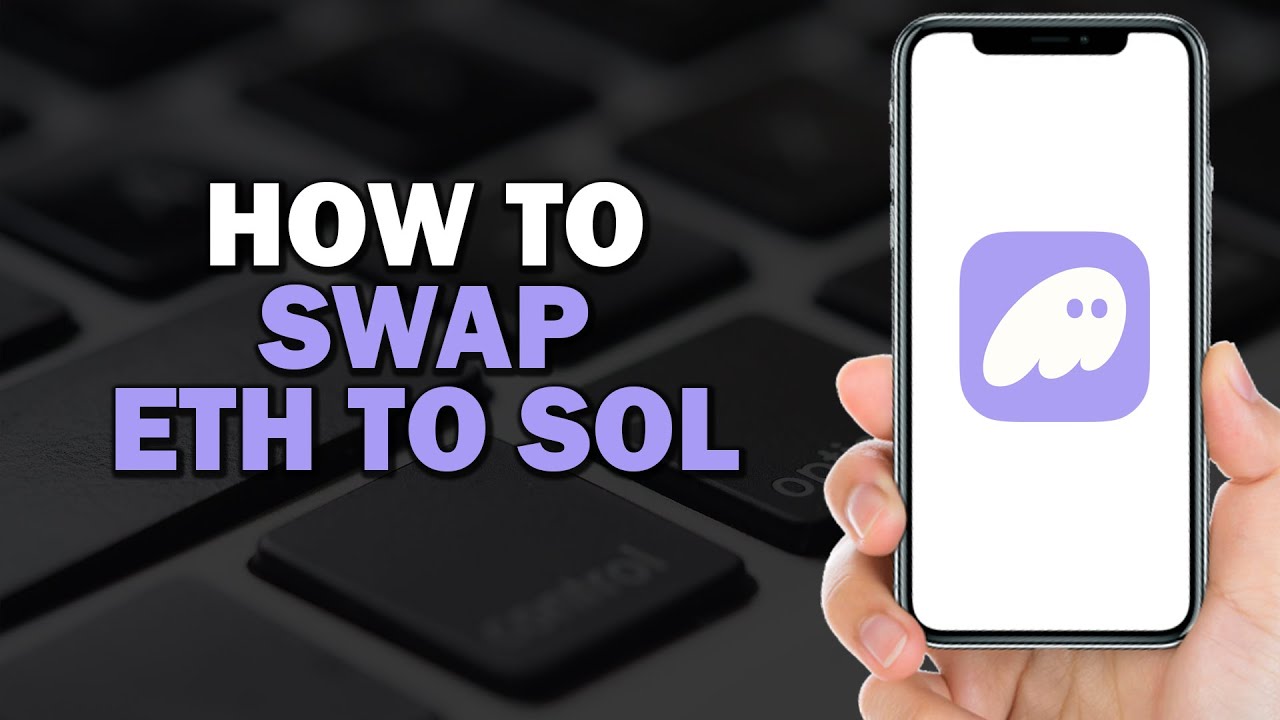In the rapidly evolving world of cryptocurrencies, Ethereum (ETH) and Solana (SOL) have emerged as two of the most prominent and innovative blockchain platforms. Ethereum, the second-largest cryptocurrency by market capitalization, is known for its smart contract functionality and decentralized application (DApp) ecosystem. On the other hand, Solana has gained significant attention for its high-performance blockchain, offering fast transaction speeds and low fees.
As the popularity of both ETH and SOL grows, many crypto enthusiasts and traders are looking to exchange their ETH for SOL or vice versa. This article provides an in-depth guide on how to exchange ETH to SOL, exploring the best platforms, the factors to consider, and the potential benefits of diversifying your cryptocurrency portfolio.
Understanding Ethereum (ETH) and Solana (SOL)
Before diving into the process of exchanging ETH to SOL, it’s crucial to understand the key features and differences between these two cryptocurrencies.
Ethereum (ETH)
Ethereum is a decentralized, open-source blockchain platform that enables the creation and deployment of smart contracts and DApps. It was launched in 2015 and has since become the foundation for a vast ecosystem of decentralized finance (DeFi) applications, non-fungible tokens (NFTs), and other blockchain-based projects.
Ethereum’s native cryptocurrency, ETH, is used to pay for transaction fees and computational services on the network. As the demand for Ethereum-based applications has grown, so has the value of ETH, solidifying its position as one of the most valuable cryptocurrencies in the market.
Solana (SOL)
Solana is a high-performance blockchain platform that aims to solve the scalability and cost issues that have plagued other blockchain networks, including Ethereum. Launched in 2020, Solana uses a unique combination of proof-of-stake (PoS) and proof-of-history (PoH) consensus mechanisms to achieve high throughput and fast transaction confirmation times.
SOL is the native cryptocurrency of the Solana blockchain, used for staking, paying transaction fees, and participating in governance decisions. As more developers and projects migrate to Solana for its speed and cost-effectiveness, the demand for SOL has surged, making it an attractive option for cryptocurrency investors and traders.
Why Exchange ETH to SOL?
There are several compelling reasons to consider exchanging your ETH for SOL:
- Diversification: Holding a diverse range of cryptocurrencies can help mitigate risk and potentially maximize returns. By exchanging some of your ETH for SOL, you can spread your investments across two promising blockchain platforms.
- High performance: Solana’s high-speed, low-cost transactions make it an attractive alternative to Ethereum, especially for DeFi applications and other blockchain-based projects that require fast and efficient processing.
- Growth potential: As more projects and developers adopt Solana, the demand for SOL is likely to increase, potentially leading to a rise in its value over time.
- Staking opportunities: Solana’s PoS consensus mechanism allows SOL holders to earn rewards by staking their tokens and participating in network validation. Exchanging ETH for SOL can enable you to take advantage of these staking opportunities and earn passive income.
Choosing the Right Exchange Platform
When it comes to exchanging ETH to SOL, selecting a reputable and secure platform is paramount. Here are some key factors to consider when choosing an exchange:
- Security: Prioritize exchanges that employ robust security measures, such as two-factor authentication (2FA), cold storage for user funds, and regular security audits. Look for platforms with a strong track record of safeguarding user assets.
- Liquidity: Choose exchanges with high trading volumes and liquidity for the ETH/SOL trading pair. Higher liquidity ensures better price discovery and reduces the risk of slippage during trades.
- Fees: Compare the trading fees, deposit fees, and withdrawal fees charged by different exchanges. Some platforms may offer lower fees but might compromise on security or user experience.
- User interface: Consider the exchange’s user interface and ease of navigation, especially if you’re new to cryptocurrency trading. A well-designed and intuitive platform can make the trading process more seamless and enjoyable.
- Reputation: Research the exchange’s reputation by reading user reviews, checking for any history of security breaches or regulatory issues, and engaging with the cryptocurrency community on forums and social media.
Some reputable exchanges that support ETH to SOL trading include Binance, Kraken, FTX, and Coinbase Pro. These platforms have established themselves as industry leaders, offering a combination of security, liquidity, and user-friendly interfaces.
Step-by-Step Guide: Exchanging ETH to SOL
Once you’ve chosen a suitable exchange platform, follow these steps to exchange your ETH for SOL:
- Create an account: Sign up for an account on the selected exchange platform. You’ll typically need to provide personal information, such as your name, email address, and proof of identity, to comply with Know Your Customer (KYC) and Anti-Money Laundering (AML) regulations.
- Deposit ETH: After your account is verified, deposit the desired amount of ETH into your exchange wallet. Each platform will provide specific instructions for depositing funds, which may involve copying an ETH deposit address or scanning a QR code.
- Navigate to the ETH/SOL trading pair: Once your ETH deposit is confirmed, navigate to the ETH/SOL trading pair on the exchange. This is where you’ll execute the exchange transaction.
- Place an ETH to SOL order: Enter the amount of ETH you wish to exchange for SOL or the amount of SOL you wish to receive. Review the current market price and the estimated SOL quantity you’ll obtain based on the exchange rate. Double-check the details and confirm the order.
- Wait for the order to be filled: The exchange will process your ETH to SOL order. The time it takes for the order to be filled may vary depending on market conditions and the exchange’s liquidity.
- Withdraw SOL: Once the order is filled, the SOL will be credited to your exchange wallet. If you plan to hold your SOL for an extended period, it’s advisable to withdraw it to a secure personal wallet, such as a hardware wallet or a non-custodial software wallet like Solflare or Sollet.
Alternatively, some exchanges offer instant ETH to SOL swaps, allowing you to exchange the two cryptocurrencies without navigating the trading interface. These instant swap features may come with higher fees but provide a more convenient option for users who prioritize simplicity.
Risks and Considerations
While exchanging ETH to SOL can offer several benefits, it’s essential to be aware of the potential risks and considerations:
- Market volatility: Cryptocurrencies, including ETH and SOL, are known for their price volatility. The value of your holdings may fluctuate significantly in a short period, so it’s crucial to have a well-thought-out investment strategy and risk management plan.
- Exchange security: Despite the security measures implemented by reputable exchanges, there’s always a risk of hacks, security breaches, or insider threats. To minimize this risk, keep only the necessary funds on exchanges and store the majority of your cryptocurrencies in secure personal wallets.
- Regulatory uncertainty: The regulatory landscape for cryptocurrencies is constantly evolving, and different countries have varying approaches to digital assets. Stay informed about the legal and tax implications of exchanging ETH to SOL in your jurisdiction.
- Network congestion: Both Ethereum and Solana networks may experience periods of congestion, leading to slower transaction times and higher fees. Be prepared for potential delays and cost fluctuations when exchanging ETH to SOL.
- Opportunity cost: By exchanging ETH for SOL, you may miss out on potential gains from holding ETH or other cryptocurrencies. Consider your investment goals and conduct thorough research before making any significant portfolio changes.
Future Outlook for ETH and SOL
Ethereum and Solana are both poised for significant growth and adoption in the coming years. Ethereum’s upcoming transition to a PoS consensus mechanism (Ethereum 2.0) is expected to improve the network’s scalability, security, and sustainability. This upgrade could further solidify Ethereum’s position as the leading platform for DeFi and other decentralized applications.
Meanwhile, Solana’s high-performance blockchain is attracting a growing number of developers and projects, particularly in the DeFi and NFT spaces. As more applications are built on Solana, the demand for SOL is likely to increase, potentially driving up its value.
In the long run, both ETH and SOL are expected to play crucial roles in the evolving cryptocurrency and blockchain ecosystem. By exchanging ETH to SOL, investors can diversify their holdings and participate in the growth of two leading blockchain platforms.
Conclusion
Exchanging ETH to SOL can be a strategic move for cryptocurrency investors and traders looking to diversify their portfolios and capitalize on the growth potential of both Ethereum and Solana. By understanding the key features of each cryptocurrency, selecting a reputable exchange platform, and following the step-by-step guide, you can safely and efficiently exchange your ETH for SOL.
However, it’s crucial to consider the risks and potential drawbacks associated with any cryptocurrency exchange, such as market volatility, security concerns, and regulatory uncertainties. By staying informed, maintaining a long-term perspective, and implementing proper risk management strategies, you can navigate the world of ETH to SOL exchange with confidence and potentially reap the rewards of participating in two of the most promising blockchain ecosystems.



